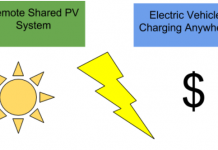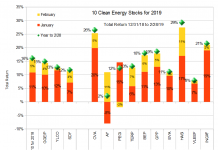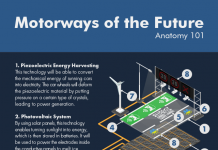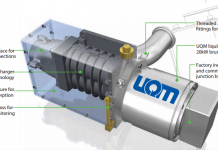Tom Konrad, CFA
Satellite (GPS) navigation is a Smart Transport strategy that drivers can implement without waiting for governments to act. This is a look at five GPS Navigation stocks.
I recently wrote how Smart Transport stocks may benefit from declining supply and increasing demand for oil. I call the application of information technology (IT) to transportation “Smart Transportation.” Smart Transportation improves the function of the market for transportation services, just as the Smart Grid improves the market for electricity: by giving market participants better information and making the price of transportation better reflect the costs. Because reducing congestion also reduces fuel use at very little cost, Smart Transport stocks should benefit from peak oil.
Types of Smart Transport
Smart Transport can be implemented from the top down, or the bottom up. Top down Smart Transport involves government agencies adding IT such as cameras, card readers, and other sensors to roads or mass transit systems, either to provide drivers or passengers better information about conditions or to charge a usage fee. Bottom-up involves drivers and riders using IT to acquire better information about road or transit conditions in order to make better decisions about where, how, and when they’ll go about getting where they need to be. That usually means a driver or fleet owner buying a GPS navigation system or systems.
Because GPS Navigation only improves access to information, and does not improve the market structure, it has less potential to reduce congestion than top-down road pricing schemes. Yet GPS navigation has a major advantage as well: it’s quick. A driver can purchase an learn to use a GPS in an hour or two. Government agencies seldom implement anything in less than a year, let alone anything that involves charging voters for something they’re used to getting for free. In contrast, London’s central congestion charge was formally proposed in July of 2001, and was not fully implemented until February 2003.
Will Peak Oil Help GPS Stocks?
If you believe that much of our response to peak oil will be last-minute and on a budget, you may have little trouble imagining growing numbers of people buying increasingly cheap and functional navigation devices or software for their smart phones in order to save gas by avoiding traffic and wrong turns. As I argued in “The Methadone Economy,” my vision of a likely peak oil future, the less prepared we are for peak oil, the more prevalent such bottom-up, quick to implement solutions will become.
Yet most purchasers of GPS navigation aren’t currently motivated by a desire to save gas. Until drivers begin to make the connection between navigation and gas savings, a higher oil price won’t help the share prices of GPS companies. Some GPS companies know this, and are starting to help customers make this connection. Features such as Garmin’s (GRMN) EcoRoute, which gives drivers feedback on how they can drive more efficiently is an excellent advertisement for the connection between navigation and gas savings, as well as good PR. Trafficmaster PLC (TFC.L) is even more explicit: Trafficmaster’s home page encourages fleet managers to “Cut your fuel bills by up to 30%.” Rising fuel prices will only encourage more GPS companies to jump on the “navigation saves fuel” bandwagon, and encourage more drivers and fleet managers to listen.
Competition
Unfortunately, a company’s success requires more than a growing market. Companies also need to maintain profit margins. Strong competition in GPS navigation is eroding profit margins. Smart-phone based navigation programs are challenging the incumbent vehicle based systems and stand alone devices. Google’s (GOOG) entrance into the market with free smart phone navigation software should worry all industry participants. Before Google entered the market, smart phone based GPS software came with a monthly subscription fee. A free alternative will make many more drivers wonder if they need a dedicated GPS at all.
Stocks
I feel much the same about the GPS navigation industry as I do about the solar PV manufacturing industry. The industry as a whole has a great future, but there is no guarantee that any industry participant will be able to maintain profitability for long in the face of new competition and constant innovation. That said, some companies are in better positions than others. Here are my thoughts on five GPS stocks:
Garmin, Ltd. (GRMN), $32.24
I own a Garmin Nuvï. It is the best navigation device I’ve used to date (out of three total,) despite a software bug that sometimes keeps it from booting up properly. Garmin has an excellent profit margin of 24%, no debt, and great cash flow, with a nice forward dividend yield of 4.4%. I like the fact that Garmin is directly playing the fuel-saving card with ecoRoute software, which might help them in a rising fuel price environment.
Telenav (TNAV), $8.39
Telenav went public on May 13. The company sells subscription-based navigation software for smart phones. The direct competition from a free product from Google makes me think this is a good stock to avoid.
TomTom (TOM2.AS), €5.14
TomTom makes stand alone navigation devices as well as software for the iPhone which has received good reviews. However, the company carries more debt and has a much thinner profit margin than Garmin, leaving it vulnerable to further revenue declines. TomTom does not pay a dividend.
Trafficmaster PLC (TFC.L), £ 0.47
Much more than other navigation companies, Trafficmaster is focused on helping customers (both fleet and individual) reduce fuel consumption by avoiding congestion. They use real-time speed from units installed in vehicles to constantly update their congestion data. They also provide stolen vehicle tracking. Unlike Garmin and TomTom, the company is still seeing revenue growth, perhaps because of their greater emphasis on value-added services. The company’s trailing P/E is 13, making it one of the best values in the sector.
Trimble Navigation Ltd (TRMB), $30.38
Trimble is a general global
positioning company, making GPS chip sets for a large range devices, including navigation systems. As such, they are in a relatively good position in terms of competition: their chip sets are used in other companies’ navigation systems, as well as many other industrial, construction, and agricultural applications. They’re solidly profitable, with no net debt and good cash flow, although with a P/E of 50 (at $30) and no dividend, a lot of expected growth is priced in to the stock.
Conclusion
If I were to buy any stock in this sector, it would be Trafficmaster because of the fuel-saving focus, decent valuation, and value-added services. Because Trafficmaster uses two-way communication from its units to gather traffic data, the company benefits from network effects. The more vehicles have Trafficmaster installed, the better the company’s data, and the more effective its devices will be at avoiding traffic. Yet any such advantage may be transitory: a new competitor might instantly surpass Trafficmaster in network size by using cell phone tracking data from an existing wireless phone operator, or by using some other data source no one else has thought of yet.
The competitive landscape would make me uncomfortable holding any GPS stock for the long term. As with most highly competitive industries, it’s probably better to be a customer than an investor.
DISCLOSURE: No positions.
DISCLAIMER: The information and trades provided here are for informational purposes only and are not a solicitation to buy or sell any of these securities. Investing involves substantial risk and you should evaluate your own risk levels before you make any investment. Past results are not an indication of future performance. Please take the time to read the full disclaimer here.









GPS is now widely applied for car, outdoor, fitness, specialty and cell phone, etc. It receives signals from GPS satellites, and the quality of signal is determined by many factors, like solar radiation, atmosphere conditions and terrain.
Generally not all signal from the satellite gets through to your GPS, the signal scattering is usually from vegetation, sometimes from terrain, buildings, or other objects between you and GPS satellite.
There are a lot of styles for GPS receiver in the market, including car GPS, general outdoor GPS, fitness GPS, specialty GPS and cell phone GPS.
TeleNav is a gps company and has other divisions such as an automotive (Ford – navigation supplier in select models) as well as a business unit. Navigation is not the only leg for this diverse company. Google’s free service has limited availability and is negatively impacted by Androids increasingly fragmented OS. PND’s such as Garmin and Tom Tom require a significant initial investment for a decent one and if you ever want to update your maps and POI’s not only is this a manual process but it is an additional cost as well.